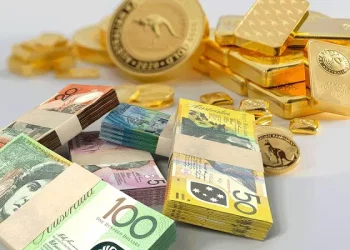The Federal Reserve System is the central banking system of the United States. It was established by the Federal Reserve Act in 1913.
Before its establishment, the United States was in the period of financial freedom. Although the first bank and the Second bank existed in history, they were not central banks in the real sense, but private banks acted as part of the central bank functions.
During the Gilded Age, the national power of the United States greatly developed and became the world’s first industrial country. This was accompanied by frequent financial crises, which caused a large number of private banks to go bankrupt and financial chaos.
The Fed was born in this context.
The Federal Reserve itself is made up of the Federal Reserve Board in Washington and the 12 regional Federal Reserve banks.
The Fed is empowered by Congress to enact and regulate U.S. financial institutions.
Functionally it has some executive power, but that power is held by the Federal Reserve Board, which is itself a functional part of the federal government.
But the Fed is also independent and does not defer to the federal government in setting policy.
Its 12 regional Fed banks are all not-for-profit entities whose shareholders are large, publicly traded commercial banks.
This creates a mutually binding balance.
From an administrative point of view, the top decision-making body of the Federal Reserve consists of seven executive members of the Federal Reserve Board and twelve presidents of regional Federal Reserve banks.
The President nominates the seven members of the executive Committee, including the chairman and vice chairman, as well as other unnamed members, and they are confirmed by a vote of the Senate.
They serve for 14 years, longer than the presidency, and are generally professionals in the economic and financial fields.
If they are confirmed in office, the president has no power to remove them, and they are subject to congressional oversight, requiring a two-thirds majority vote in the Senate.
The Fed’s chairman and vice chairman are nominated by the president for four-year terms and are removed through the same process as any other board member.
U.S. President Donald Trump nominated Fed Board Member Jerome Powell in November 2017 and he was sworn in the following February.
Mr. Trump expected Mr. Powell to be grateful for his knowledge and to return the favor by pushing the Fed to cut interest rates and further stimulate the economy.
That would brighten the U.S. economic data and boost his own performance.
Instead, Powell continued the Fed’s stated policy of raising interest rates to avoid the risk of overheating.
This infuriated Trump, who repeatedly attacked Powell in public, but Powell remained unmoved and insisted on the independence of the Fed’s monetary policy.
The mechanism of the Federal Reserve dictates that it has a relatively objective view of what is going on, and that’s not something that can be determined by just a few people.
In order to save the U.S. economy from the shock of the pandemic, the government switched on the wireless in March, leaving the U.S. almost to zero, and at the same time, massive purchases of government bonds continued to inject liquidity into the market.
If the U.S. economy is like a large farm, then the Federal Reserve is the reservoir that keeps the farm dry and wet.
Stocks rebound after sharp fall, dollar gains gold back above 1800.
Please pay attention to the specific operation, the market is changing rapidly, investment needs to be cautious, the operation strategy is for reference only.




























